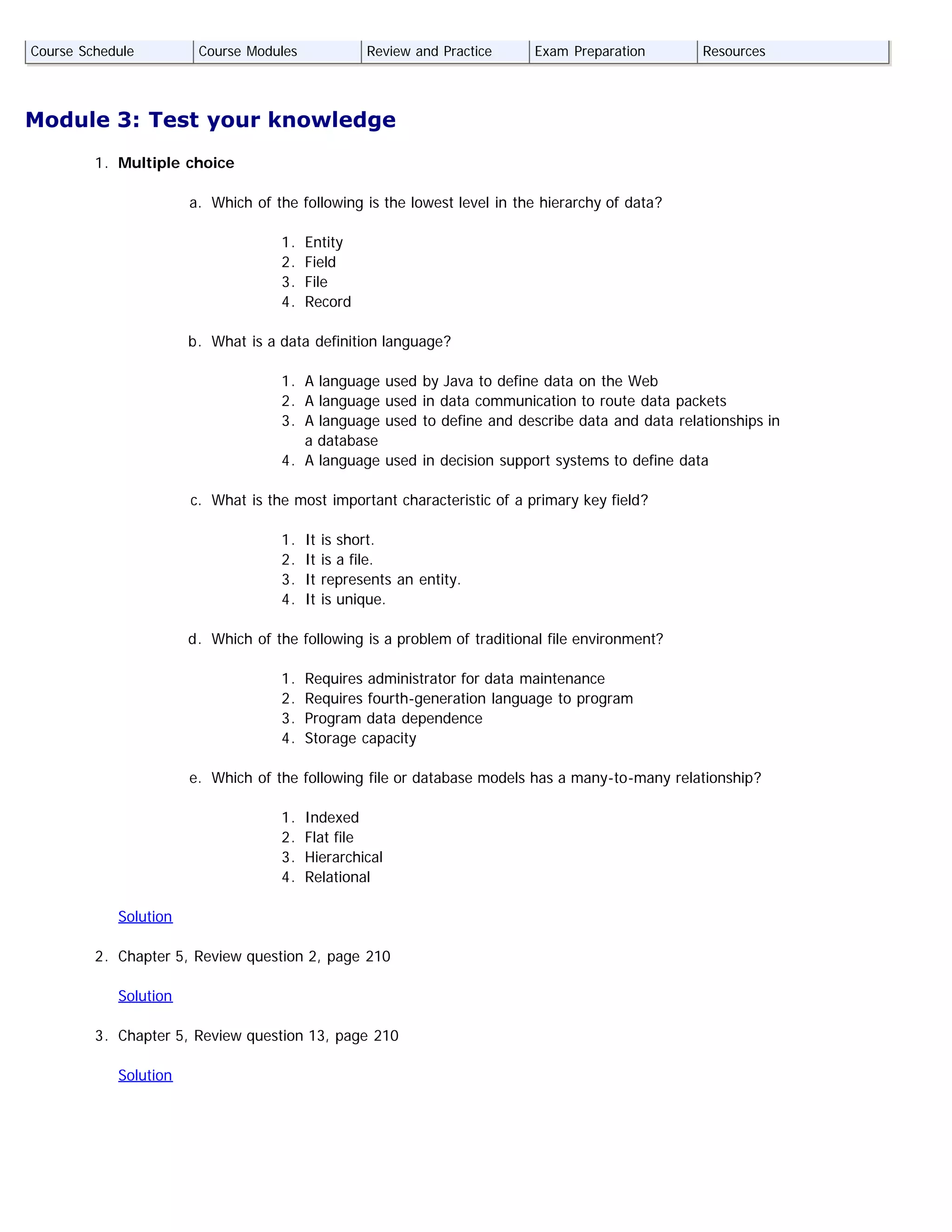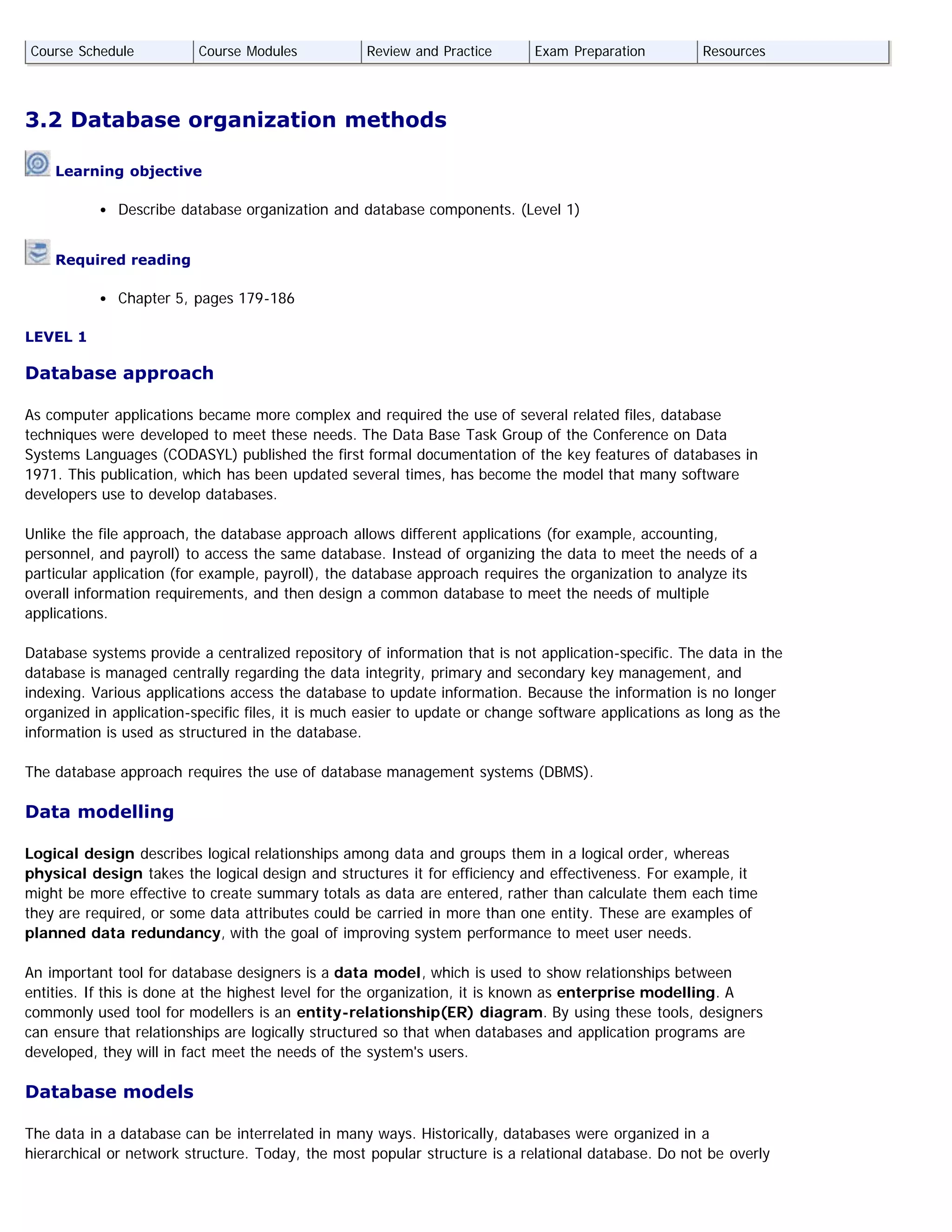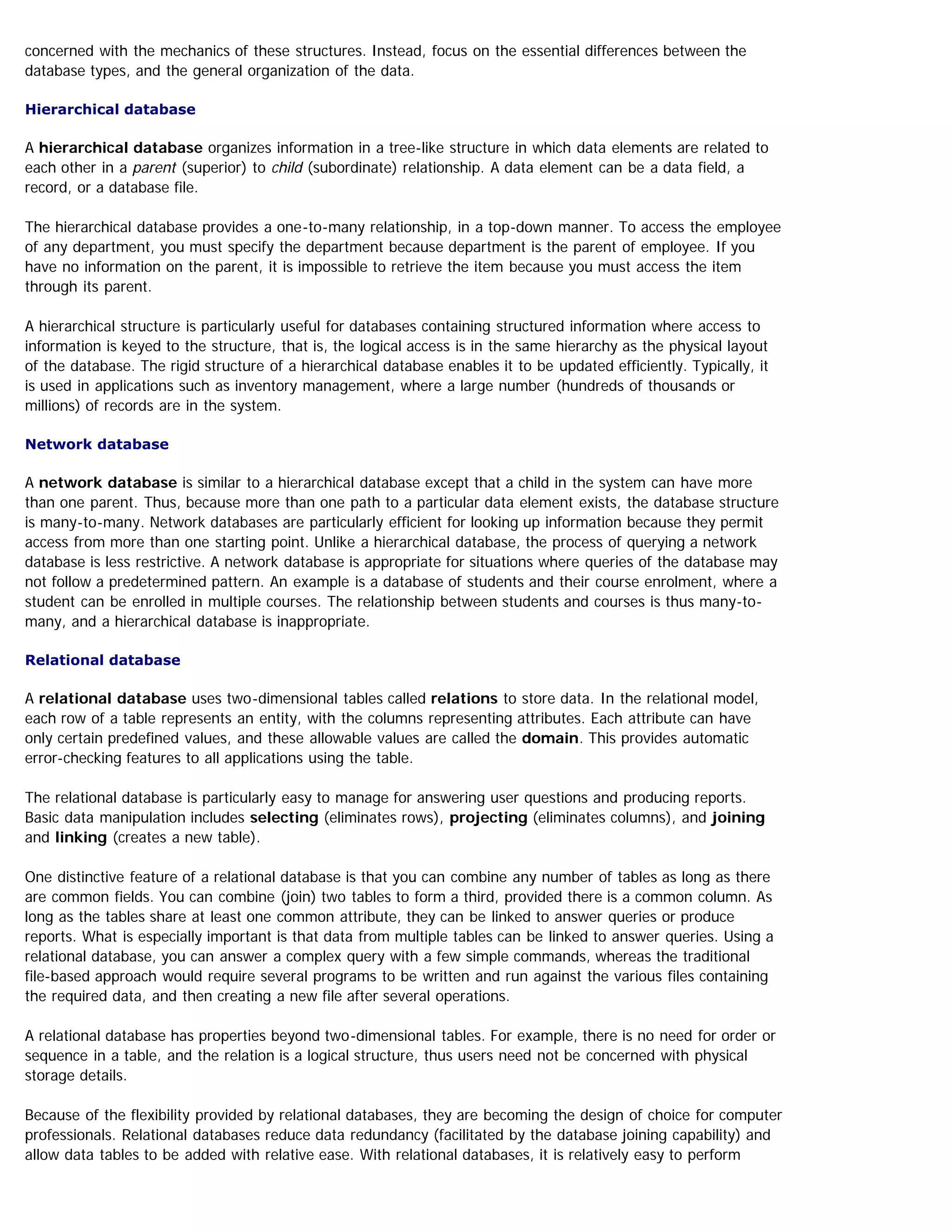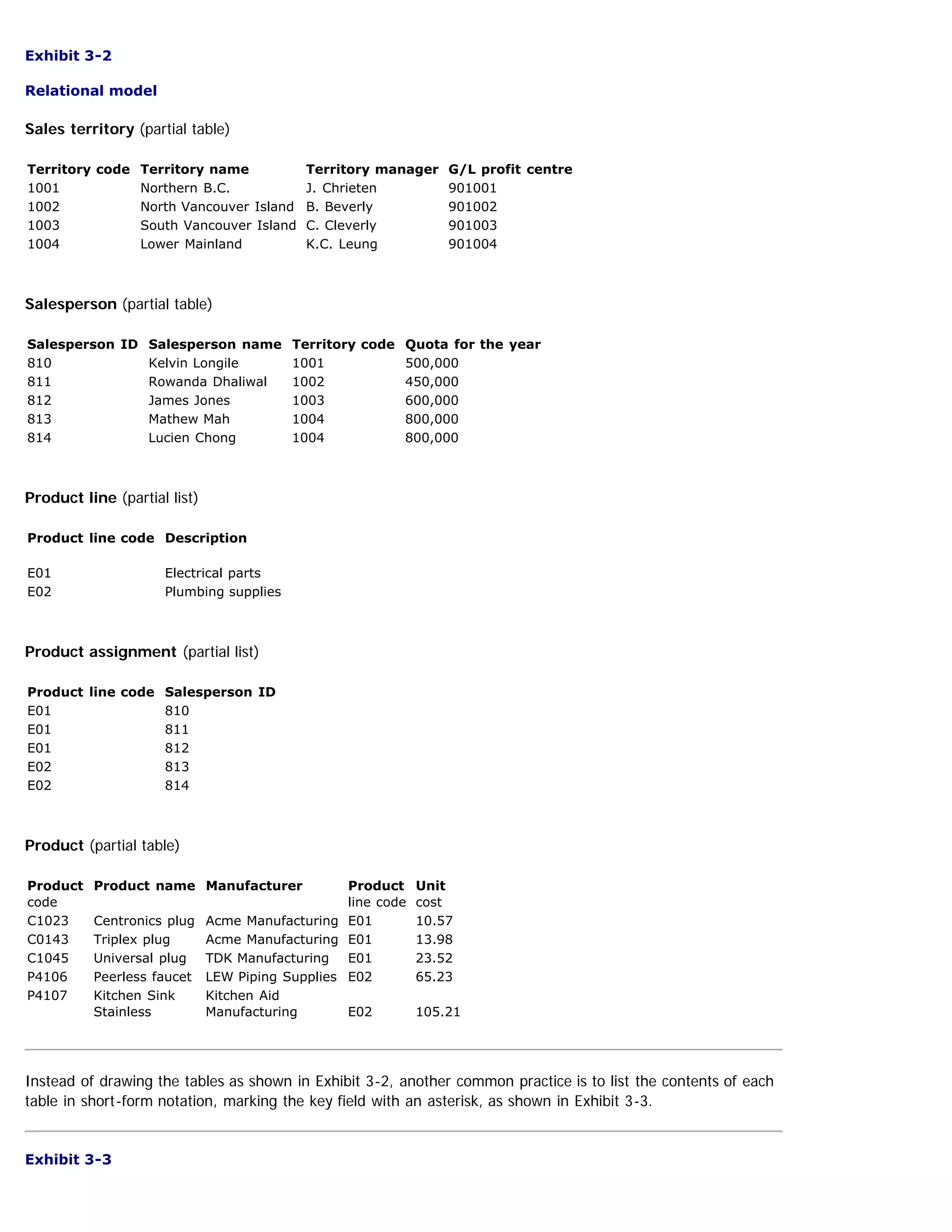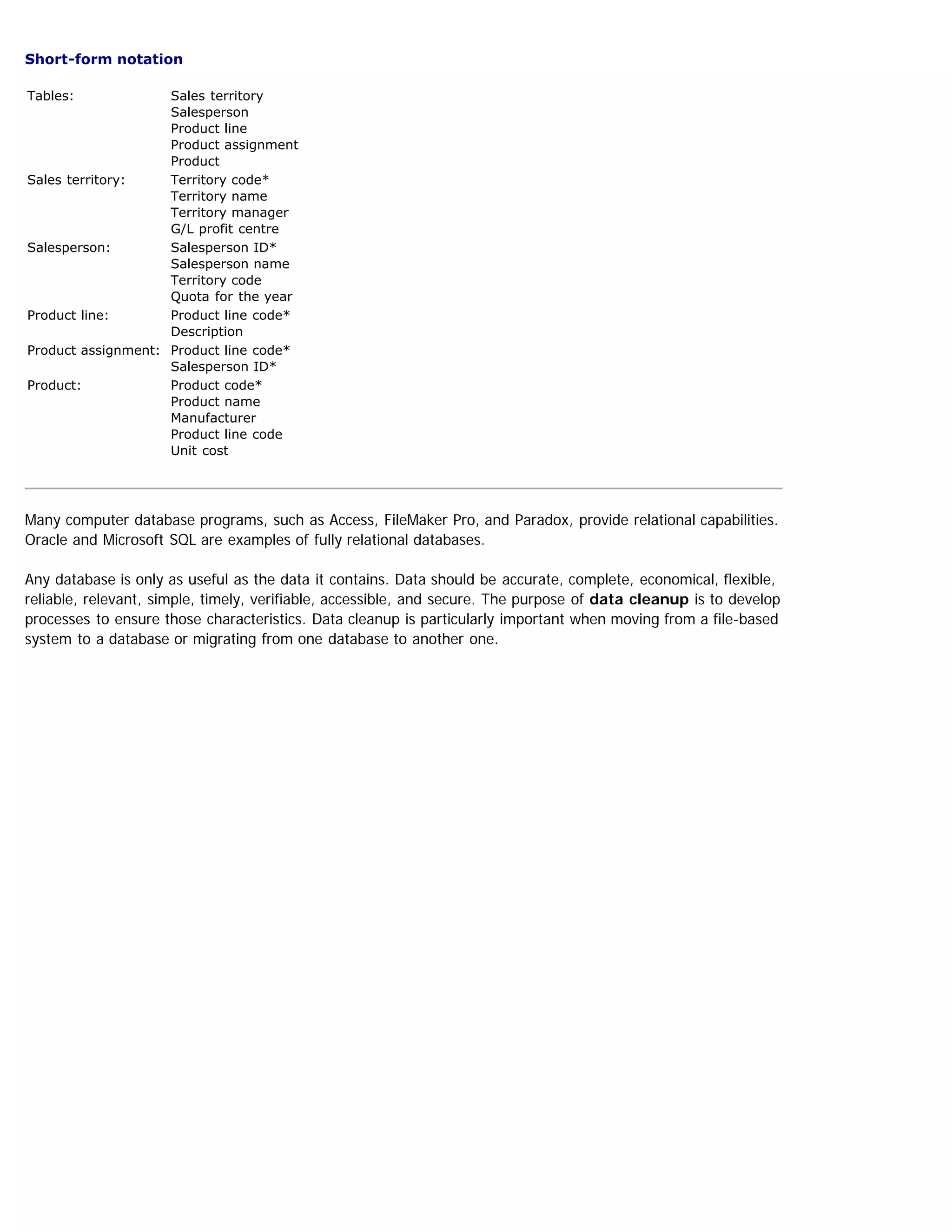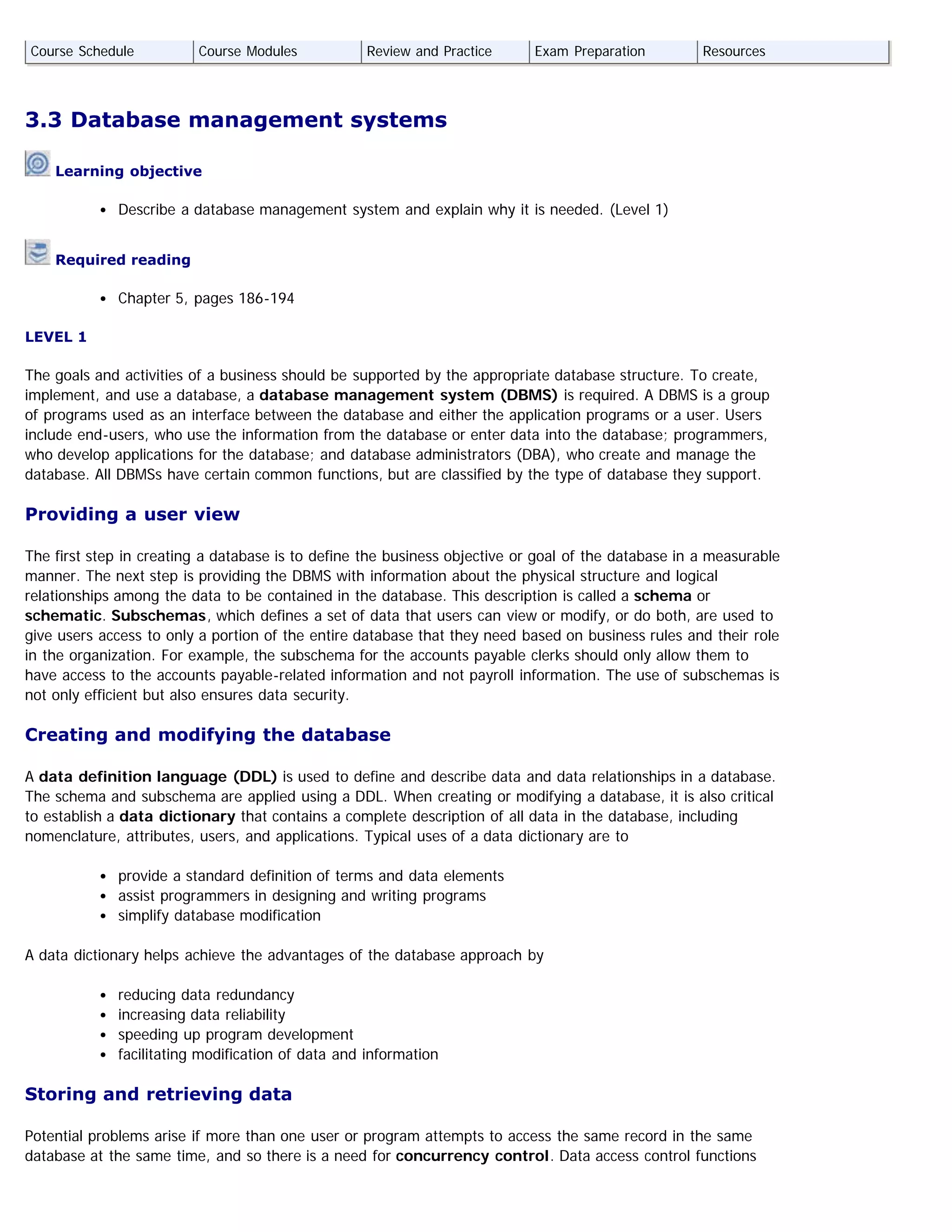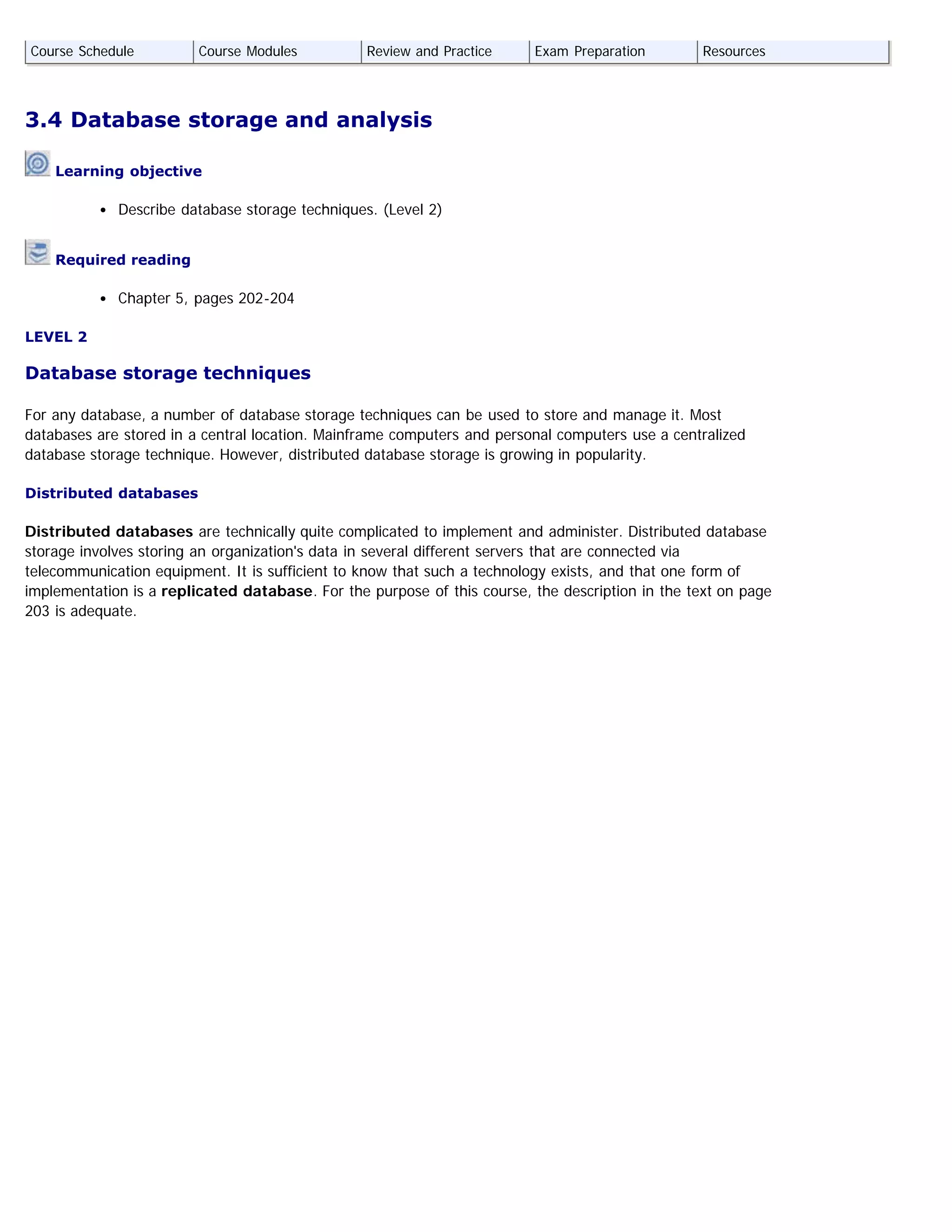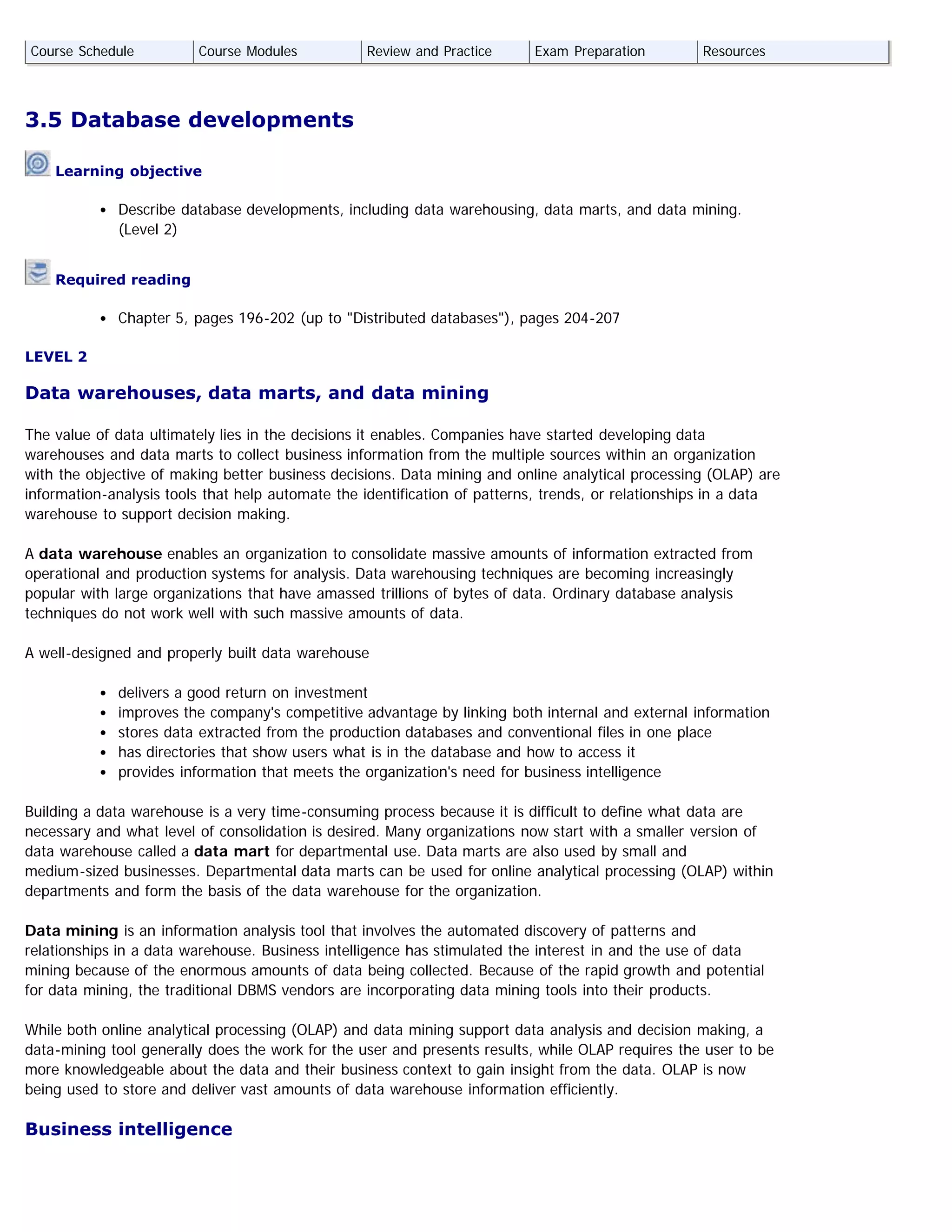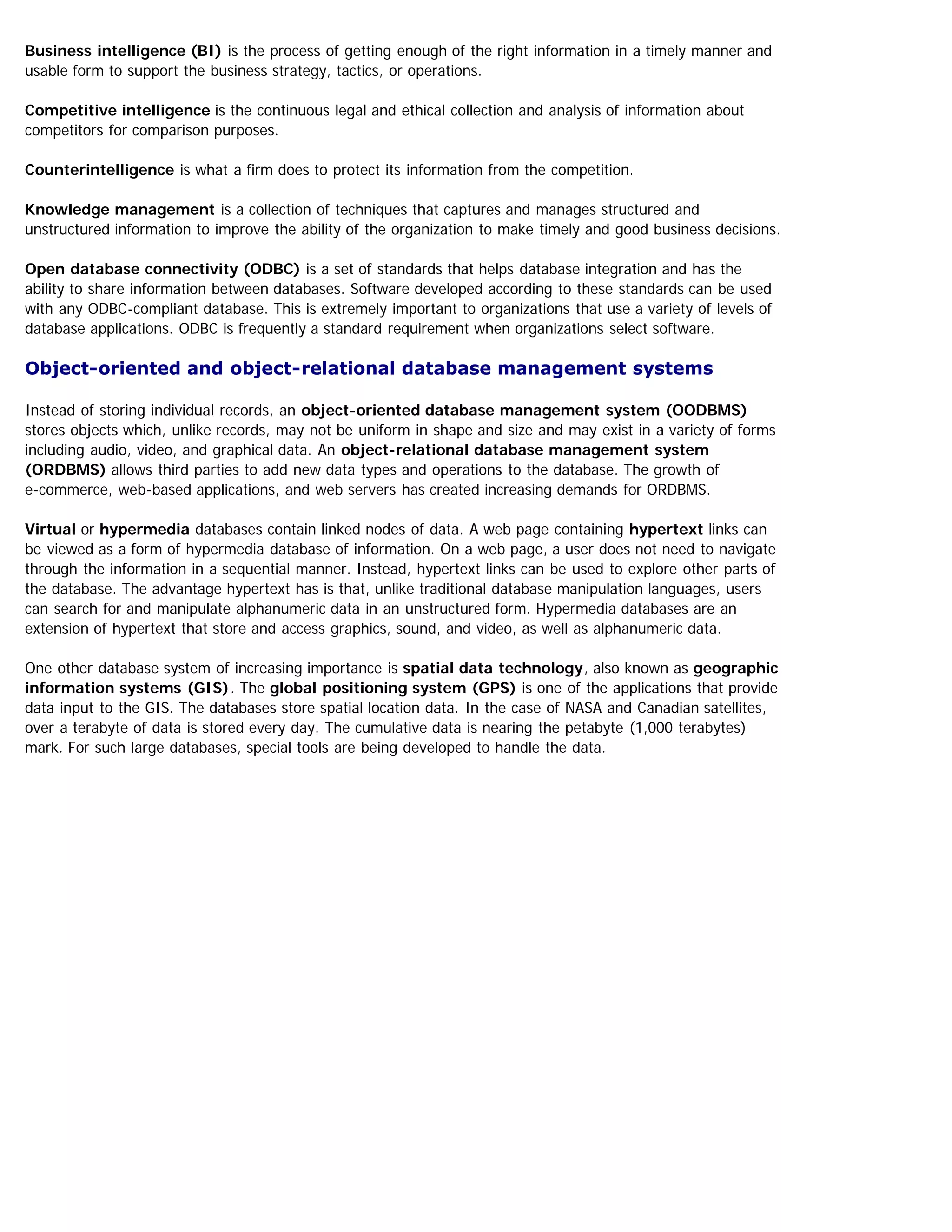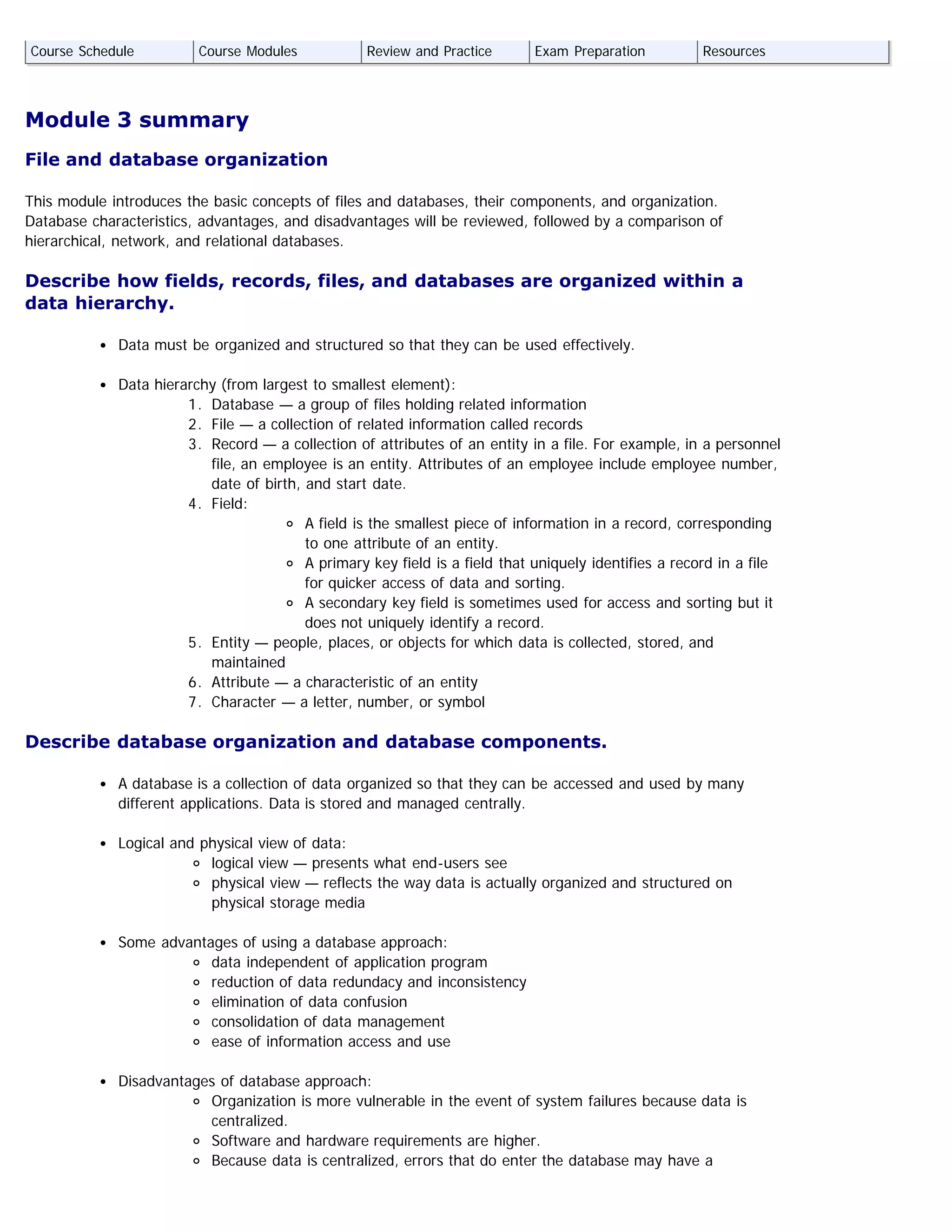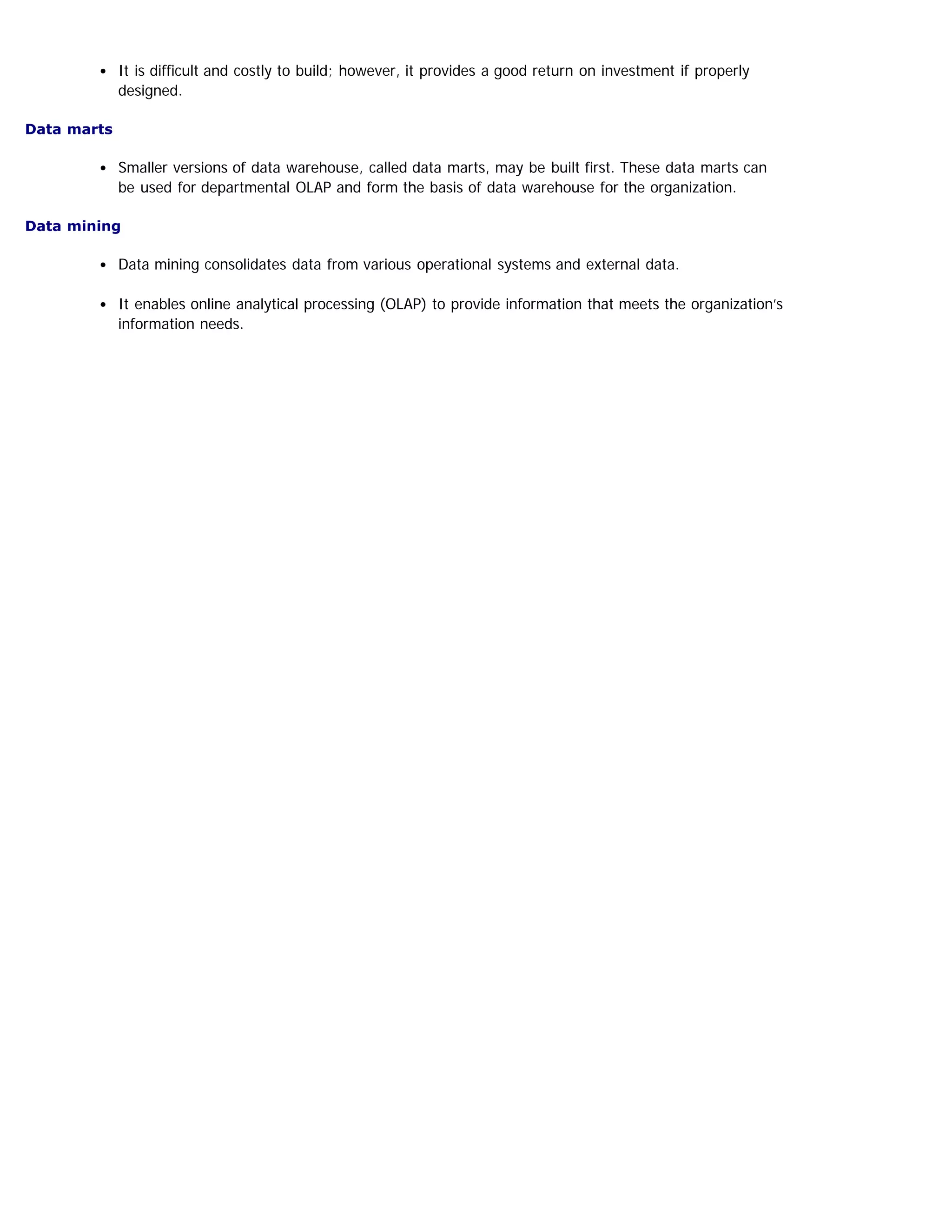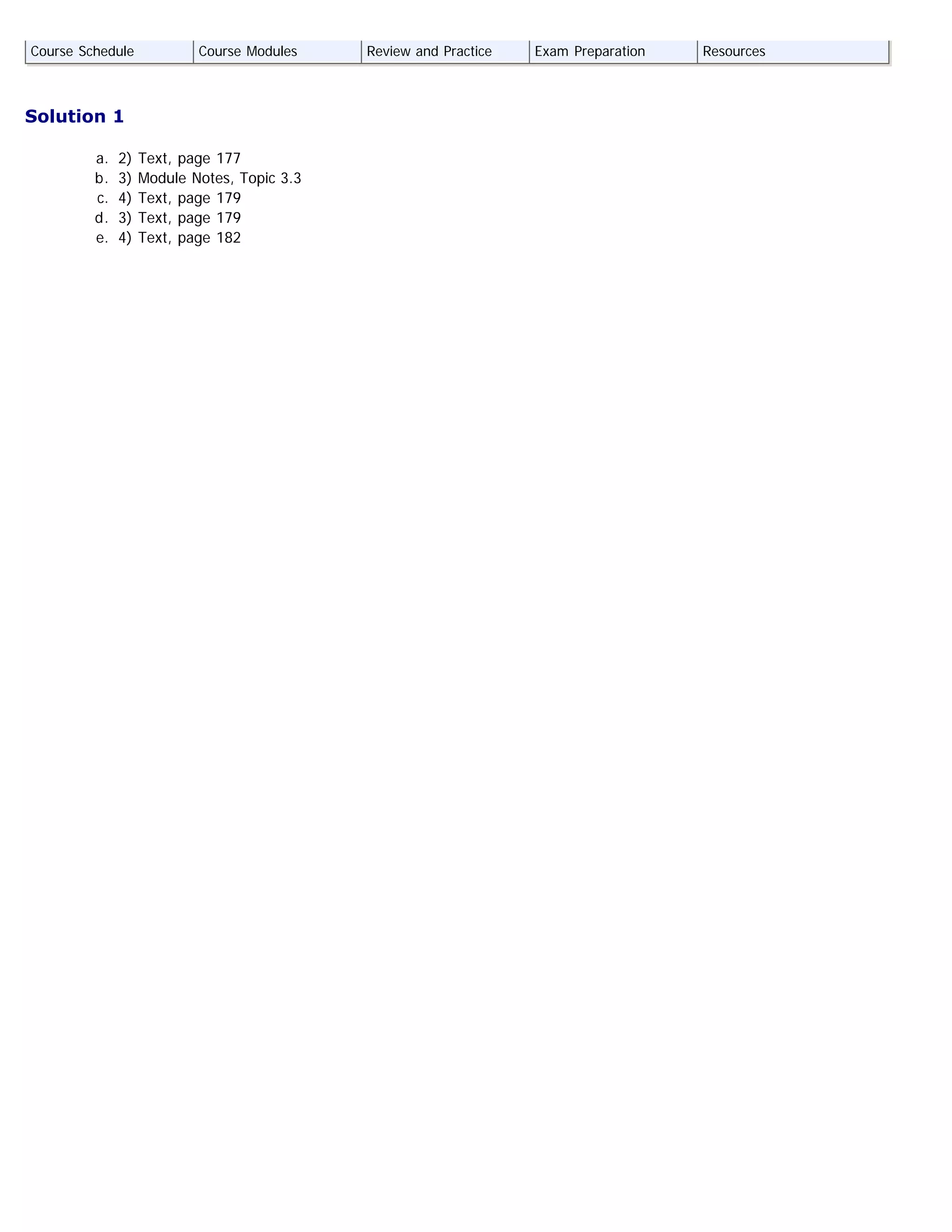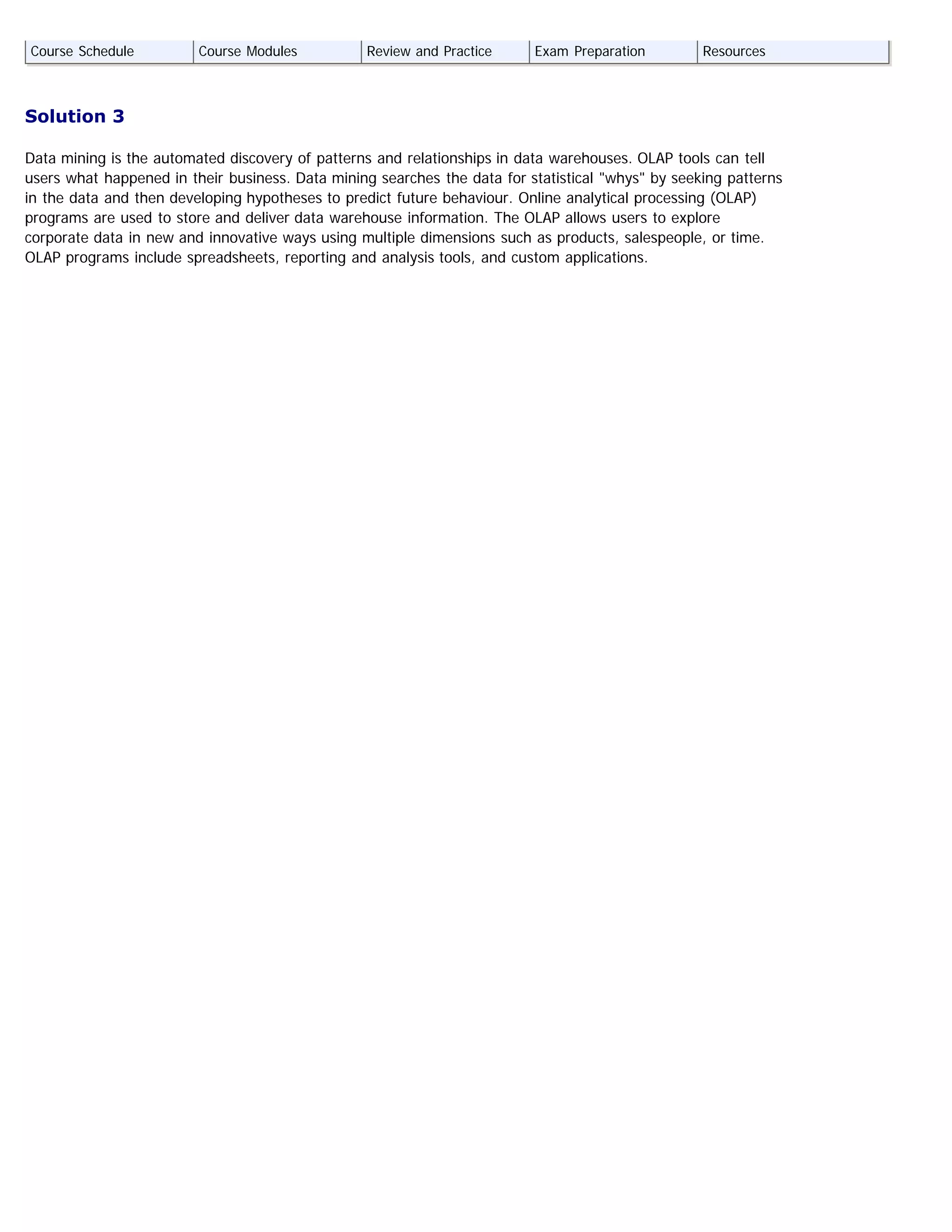This module introduces concepts related to file and database organization. It describes how data is organized in a hierarchy from characters to fields, records, files, and databases. It then discusses different database organization methods like hierarchical, network, and relational models. It also describes what a database management system is and why it is needed to create and manage databases. The key aspects covered are data modeling and organization, database components, and the role of a DBMS.

